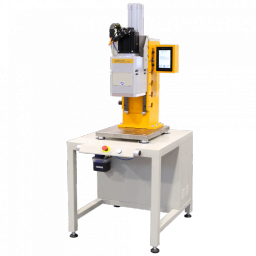Vibration welding compared to other welding technologies

Welding in general
Welding is an action aimed at joining construction materials, whether metal or plastic. It is performed by heating the contact surfaces of the materials, plasticising these contacts and applying pressure to them. Welding technology today knows the following types of this process (according to the Wikipedia encyclopaedia):
- z. electric resistance,
- with. hot. air,
- z. focal,
- z. crush,
- z. explosive,
- z. friction,
- z. ultrasonic,
- z. inductive,
- z. diffusion,
- z. short circuit,
- z. spark,
- with. high. frequency. currents,
- with. a. hot. plate,
- z. vibratory.
Vibration welding

On the differences between welding techniques

The method most similar to vibration welding is friction welding, or more precisely, friction-rotation welding. The difference here lies in the mobility of the two parts to be welded and their parallel influence on the thermal energy generated in the friction process.
More about the advantages and disadvantages of vibration welding
In the introduction to this article, we have already mentioned some of the advantages, i.e. energy efficiency, the possibility of using it on large workpieces and obtaining strong joints. The vibration welding process also does not emit any fumes. However, it does have its disadvantages. These include the inapplicability of vibration welding to plastics with different melting points and its many limitations for thermoplastic materials. Another disadvantage is the fact that the implementation of this type of process initially requires a large investment.
Application of vibration welding
Due to the advantages described, this type of welding is widely used in mass production. It is mainly used in the white goods industry (e.g. in the production of dishwasher pumps) and in the automotive industry (car parts, i.e. fuel tanks, manifolds and lighting systems).






























